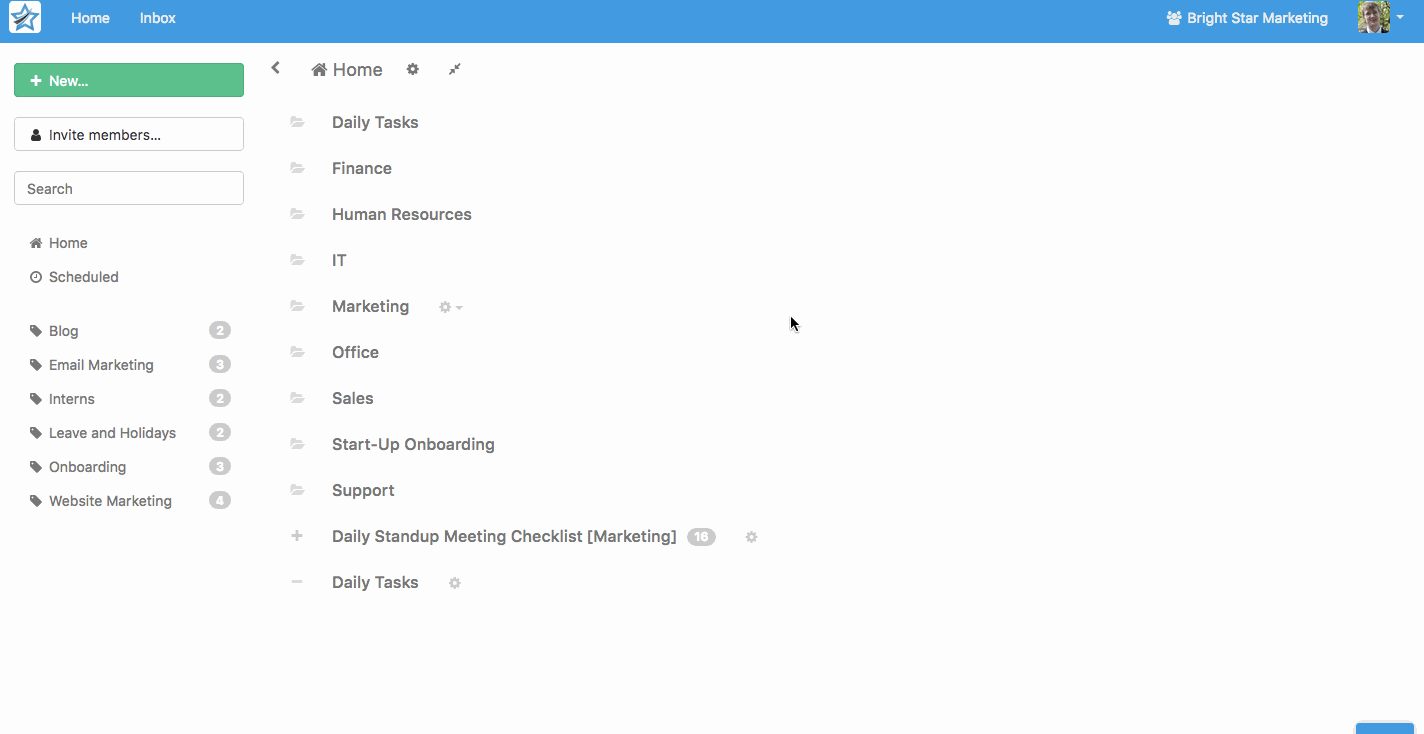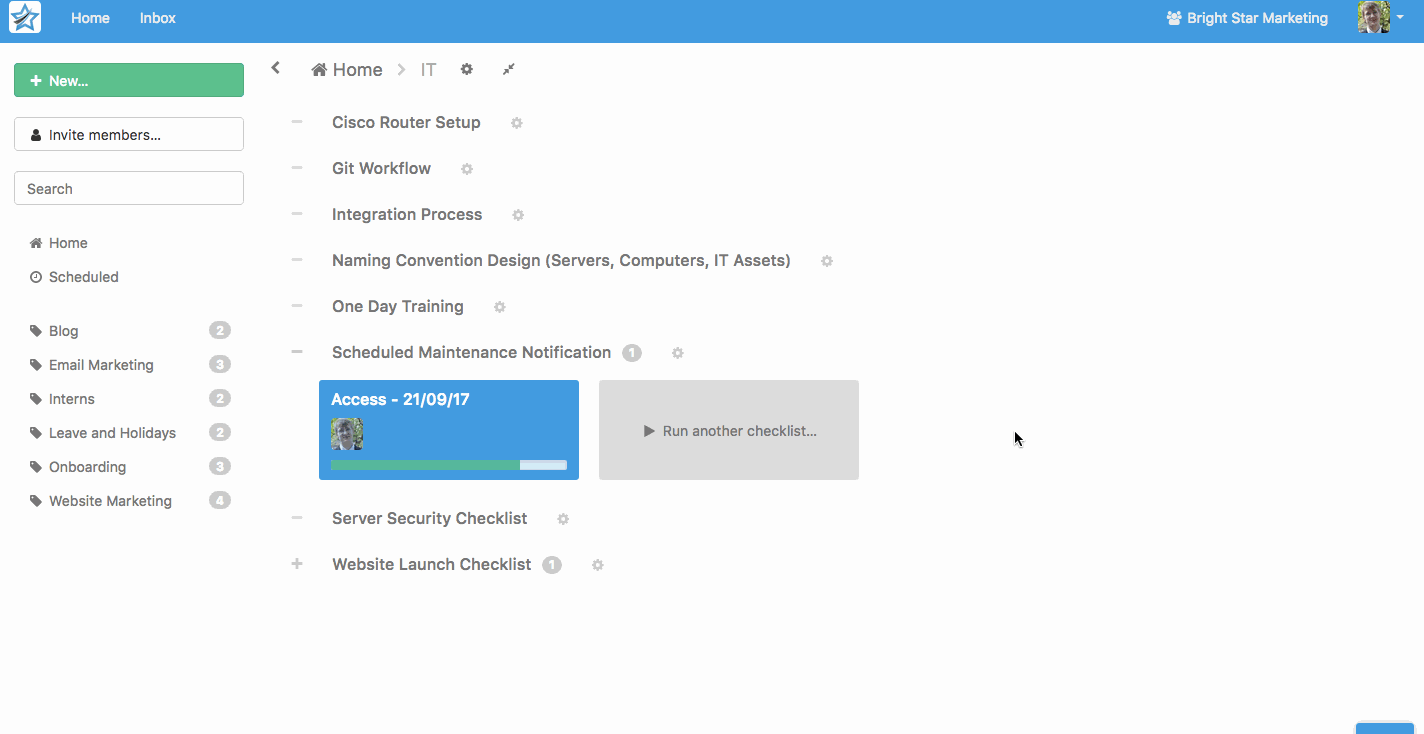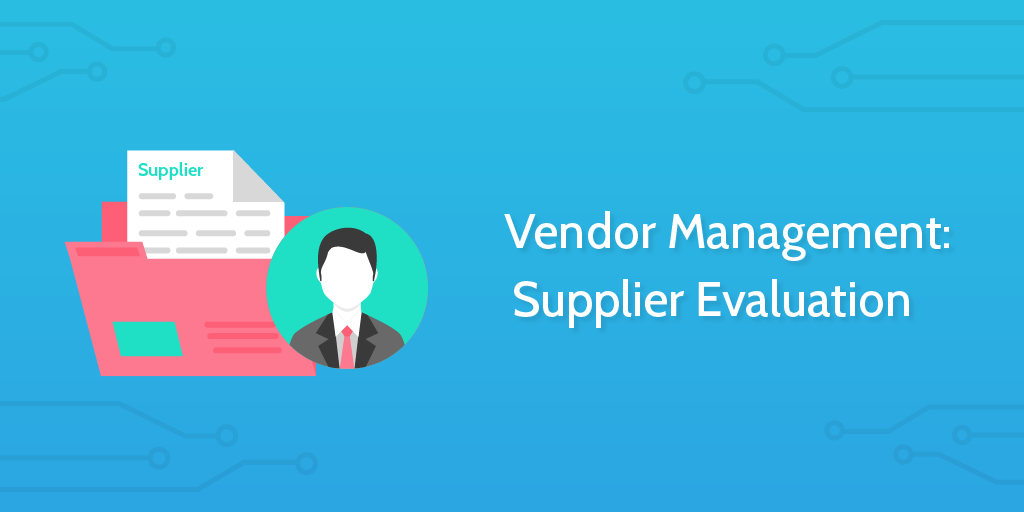
Technical procedures — especially those affecting your client’s systems and operations — must always be documented. Details and specifics are too vital for you to just wing it, especially when you’re dealing with long lists of configs, server names, and other easily-forgotten information.
That could be why SOPs (and documentation in general) are so popular and well-supported in the MSP community. Thanks to the wealth of information out there, we’ve been able to put together 7 of the most in-demand IT processes among MSPs and sysadmins.
In post, you’ll get 7 processes you can easily edit, share, and use in your own organization. Since they’re built inside Process Street, when you add them to your account they’re stored in the cloud and provided to anyone in your organization with the right access permissions.

Start building your own processes inside Process Street to systemize and track all of your IT operations. For example, in the gif below you can see three instances of scheduled maintenance stored in Process Street alongside the SOP a technician needs to do the job.

Any repeatable process can be stored in the app and assigned to the person who needs it. All process history is also logged in an easily-digestible table.
For more IT processes, make sure to check out our first IT pack, and our IT security process pack.
Now, let’s get to the processes themselves. Use the links below to go straight to the templates, or keep reading to find out more.
Get the processes
- Naming Convention Design (Servers, Computers, IT Assets)
- Cisco Router Setup
- Vendor Management: Supplier Evaluation
- Vendor Management: Contract Negotiation
- IT Service Call Process
- Scheduled Maintenance Notification
- Patch Management
Naming Convention Design (Servers, Computers, IT Assets)
Naming conventions are important for everything behind the scenes in business. Names of SOPs, tag names for documents, and the names of IT assets. Names need to be able to scale up as your business grows, be easily recognizable, and ensure that each device can get its own unique name.
In this process, we walk you through how to design a naming convention for your IT assets (one that’s a cut above naming servers after sitcom characters).
Click here to access the naming convention design checklist
Cisco Router Setup
Cisco is the biggest enterprise name when it comes to networks; more than half of the router market share in 2016 was owned by Cisco.
When setting up an office with Cisco routers, it’s best to have a condensed and easily readable guide. So, equip yourself with this handy checklist for gathering router inventory, installing routers, and verifying their operations.
Click here to access the Cisco router setup checklist
Vendor Management: Supplier Evaluation
This process is designed to help you manage the evaluation of multiple vendors so you can compare and easily decide which would be the best fit. It is based on Ray Carter’s 10Cs model, originally published in a 1995 edition of The Journal of Purchasing and Supply Management and expanded in this more recent article.
Using Process Street to manage supplier evaluation will give you an at-a-glance overview of all the suppliers you’re currently evaluating, alongside the data you’ve entered into each evaluation.
Click here to access the supplier evaluation checklist
Vendor Management: Contract Negotiation
While the planning stage can take weeks, the actual negotiation can take even longer. Documented processes are great for tracking progress through drawn-out procedures, because it means you can remember where you’re up to, record your data, and manage multiple negotiations simultaneously.
Use this contract negotiation checklist to make sure you’re always thoroughly preparing and planning your negotiations, no matter how tricky they may be.
Click here to access the contract negotiation checklist
IT Service Call Process
The process of assigning a client’s service call to an engineer, keeping a client in the loop, and reporting on the work can be easily mismanaged. Failure to assign a technician or give the client an ETA can make the difference between a satisfied client and a bad reputation.
Using this process, you’ll be able to work with technicians and clients to assign work, keep clients updated, and track the expenses. You can hand it over to your accounting team, too, to generate invoices using the information you record.
Click here to access the IT service call checklist
Scheduled Maintenance Notification
When it’s done well, scheduled maintenance goes almost unnoticed. It’s done in the early hours of the morning, or rolled out slowly as to minimize the impact on key systems. In any case, it’d be unwise not to notify the organization when it’s happening — salespeople could find themselves disconnected while video conferencing with an important customer, or the payroll system could delay wages.
It’s best practice to notify your organization of scheduled maintenance, alongside a summary of the expected duration, affected systems, and description of the disruptions. You can use this process to make those notifications easy.
Click here to access the scheduled maintenance checklist
Patch Management
Up until recently, Microsoft released patches on the first Tuesday of every month. This was its hat-tip to IT teams, making it easier to know when to schedule update tasks, and not loading them with even more work on Monday mornings. Patches are necessary to ward against vulnerabilities, but they can also break established systems. That’s why they need to be carefully managed, monitored, and tested.
With this process, you’ll get a system for effectively patching your organization’s systems by deploying patches to a test group first and monitoring the results.
Click here to access the patch management checklist
Did you find what you were looking for in this pack of MSP processes? If not, let us know in the comments and we’ll make what you need.







 Workflows
Workflows Projects
Projects Data Sets
Data Sets Forms
Forms Pages
Pages Automations
Automations Analytics
Analytics Apps
Apps Integrations
Integrations
 Property management
Property management
 Human resources
Human resources
 Customer management
Customer management
 Information technology
Information technology










Benjamin Brandall
Benjamin Brandall is a content marketer at Process Street.